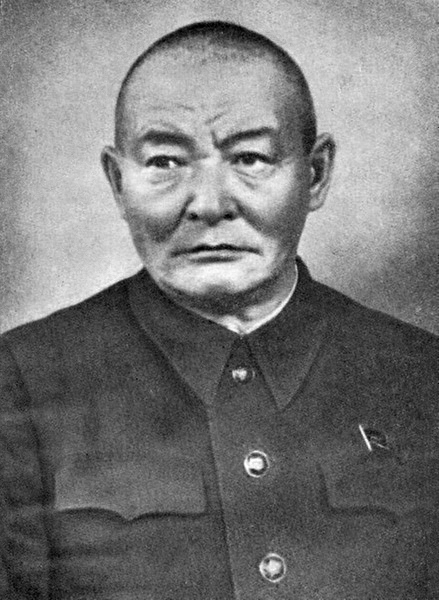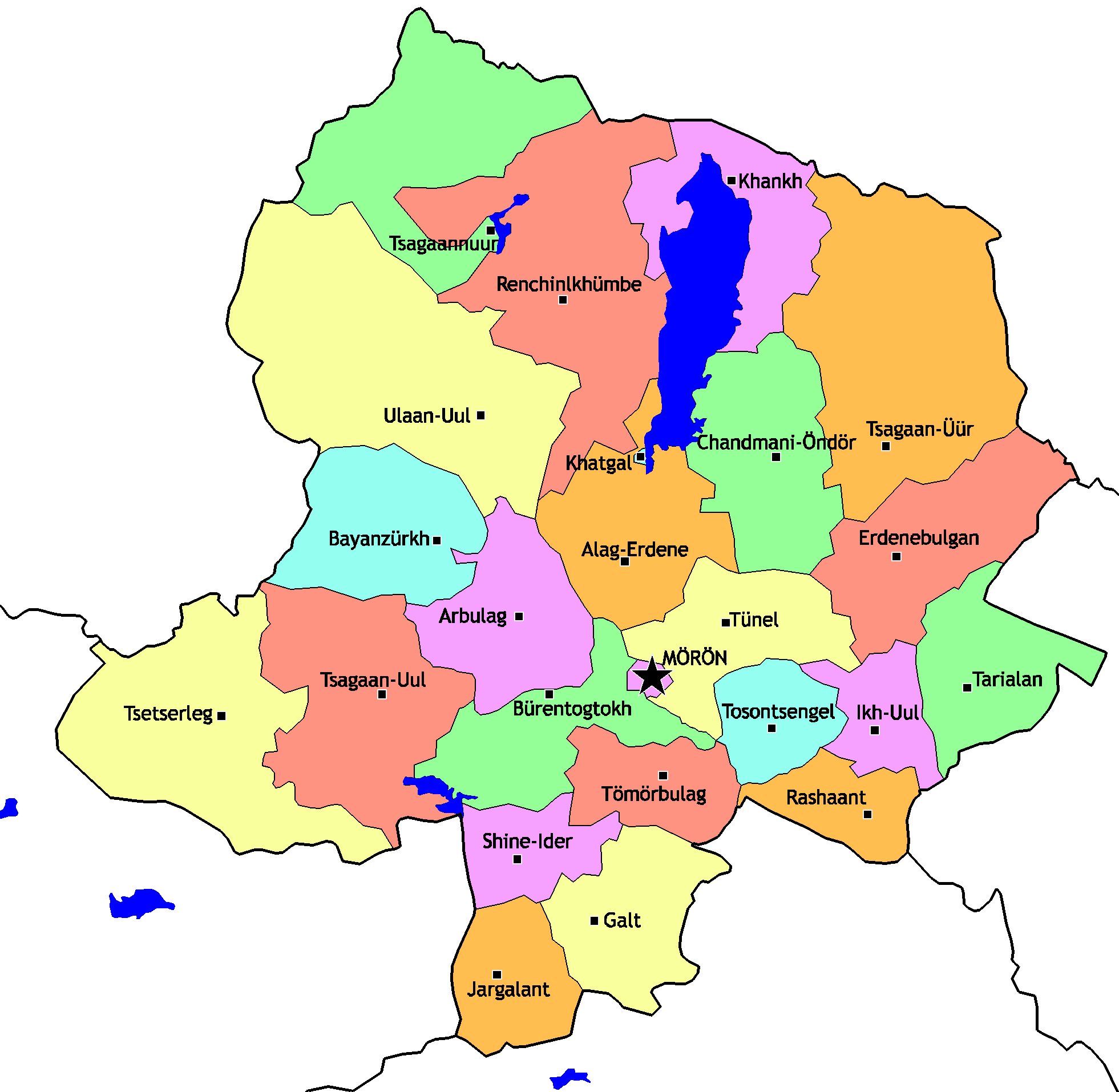|
1932 Armed Uprising
The 1932 armed uprising ( mn, 1932 оны зэвсэгт бослого, translit=1932 ony zevsegt boslogo) in Mongolia, also known as the Khuvsgul Uprising ( mn, Хөвсгөлийн бослого, translit=Khөvsgөliyn boslogo) was a popular revolt against the "left course" policies of the Mongolian People's Revolutionary Party (MPRP) as directed by Soviet Bolsheviks and Comintern agents in the People's Republic of Mongolia. Principally led by lamas, the uprisings covered the northwest part of the country and lasted from April–November 1932. Most rebels consisted of common herders but even many party members and the local bureaucrats joined the rebellion. The insurgents were spurred on by rumors of support from the Panchen Lama and the Japanese. More than 1,500 people were killed in the violenceD. Tserenbaljir, ''1932 ony zevsegt boslogo'', Ulaanbaatar 1990, p. 94f. as both insurgents and Soviet-backed Mongolian troops sent to quell the rebellion engaged in atrocities. S ... [...More Info...] [...Related Items...] OR: [Wikipedia] [Google] [Baidu] |
Stalinist Repressions In Mongolia
The Stalinist repressions in Mongolia ( mn, Их Хэлмэгдүүлэлт, Ikh Khelmegdüülelt, ''"Great Repression"'') refers to an 18 month period of heightened political violence and persecution in the Mongolian People's Republic between 1937 and 1939. The repressions were an extension of the Stalinist purges (also known as the Great Purge) unfolding across the Soviet Union around the same time. Soviet NKVD advisors, under the nominal direction of Mongolia's ''de facto'' leader Khorloogiin Choibalsan, persecuted thousands of individuals and organizations perceived as threats to the Mongolian revolution and the growing Soviet influence in the country. As in the Soviet Union, methods of repression included torture, show trials, executions, and imprisonment in remote forced labor camps, often in Soviet gulags. Estimates differ, but anywhere between 20,000 and 35,000 "enemies of the revolution" were executed, a figure representing three to five percent of Mongolia's total po ... [...More Info...] [...Related Items...] OR: [Wikipedia] [Google] [Baidu] |
Bat-Ochiryn Eldev-Ochir
Bat-Ochiryn Eldev-Ochir ( mn, Бат-Очирын Элдэв-Очир; 1905–1937) was a prominent political figure in early years of the Mongolian People's Republic who, between 1928 and 1937, was one of three secretaries of the Central Committee of the Mongolian People's Revolutionary Party (MPRP). He served as the party's First Secretary from 1929 to 1930 and again for a month in 1932. As party leader, Eldev-Ochir pushed for rapid implementation of socialist policies (forced collectivization and property confiscation) during the “Leftist” period of the early 1930s, led the persecution of institutional Buddhism in Mongolia, and backed Soviet-sponsored purges of counterrevolutionary elements, particularly Buryat-Mongols, during the Lkhümbe affair in 1934-1935. He died in 1937 after being injured in a car accident. Early life and career Eldev-Ochir was born in 1905 in Zasagt Khan Province where, from 1922 to 1925, he was leader of the local cell of the Mongolian Revolu ... [...More Info...] [...Related Items...] OR: [Wikipedia] [Google] [Baidu] |
Tuva
Tuva (; russian: Тува́) or Tyva ( tyv, Тыва), officially the Republic of Tuva (russian: Респу́блика Тыва́, r=Respublika Tyva, p=rʲɪˈspublʲɪkə tɨˈva; tyv, Тыва Республика, translit=Tyva Respublika ), is a federal subject of Russia (a republic, also defined in the Constitution of the Russian Federation as a state). The Tuvan Republic lies at the geographical center of Asia, in southern Siberia. The republic borders the Altai Republic, the Republic of Khakassia, Krasnoyarsk Krai, Irkutsk Oblast, and the Republic of Buryatia in Russia and Mongolia to the south. Tuva has a population of 307,930 ( 2010 census). Its capital is the city of Kyzyl. From 1921 to 1944, Tuva constituted a sovereign, independent, but partially recognized nation, acknowledged only by its neighbors the Soviet Union and Mongolia. It was known officially as Tannu Tuva until 1926 and thereafter as the Tuvan People's Republic. A majority of the population are ethni ... [...More Info...] [...Related Items...] OR: [Wikipedia] [Google] [Baidu] |
Ulaanbaatar
Ulaanbaatar (; mn, Улаанбаатар, , "Red Hero"), previously anglicized as Ulan Bator, is the capital and most populous city of Mongolia. It is the coldest capital city in the world, on average. The municipality is located in north central Mongolia at an elevation of about in a valley on the Tuul River. The city was originally founded in 1639 as a nomadic Buddhist monastic center, changing location 28 times, and was permanently settled at its current location in 1778. During its early years, as Örgöö (anglicized as Urga), it became Mongolia's preeminent religious center and seat of the Jebtsundamba Khutuktu, the spiritual head of the Gelug lineage of Tibetan Buddhism in Mongolia. Following the regulation of Qing-Russian trade by the Treaty of Kyakhta in 1727, a caravan route between Beijing and Kyakhta opened up, along which the city was eventually settled. With the collapse of the Qing Empire in 1911, the city was a focal point for independence efforts, leading ... [...More Info...] [...Related Items...] OR: [Wikipedia] [Google] [Baidu] |
Jambyn Lkhümbe
Jambyn Lkhümbe ( mn, Жамбын Лхүмбэ; 1902 – June 30, 1934) was member of the Presidium (or Politburo) of the Central Committee of the Mongolian People's Revolutionary Party (MPRP) from 1930 to 1933 and served as First Secretary of the MPRP Central Committee from July 30, 1932 to June 30, 1933. Lkhümbe was arrested in 1933 and accused of being the ringleader of a counterrevolutionary group conspiring to turn Mongolia into a Japanese protectorate. The ensuing "Lkhümbe Affair" resulted in the purge of numerous high-ranking politicians and military officers, with particular emphasis placed on the persecution of Buryat-Mongols. He was found guilty on June 25, 1934 and he was executed on June 30, 1934. Career Lkhümbe was born in 1902 in present-day Khairkhandulaan district, Övörkhangai Province in central Mongolia. After receiving training at the MPRP Party School in Ulaanbaatar (1926-1927) he then became the school's director in 1928. Lkhümbe was one of s ... [...More Info...] [...Related Items...] OR: [Wikipedia] [Google] [Baidu] |
Zavkhan Province
Zavkhan (; mn, Завхан, Zawhan, ) is one of the 21 aimags (provinces) of Mongolia, located in the west of the country, 1,104 km from Ulaanbaatar. Its capital is Uliastai. The aimag is named after the Zavkhan River, which forms the border between Zavkhan and Gobi-Altai aimag. Environment Locally, Zavkhan's environment is considered "Gobi-Khangai" (Говь хангай), since it connects the Gobi Desert in the south with the western Khangai Mountain Range and the broad lake basin of Khovd aimag. The highest peak in the province is Otgontenger (Отгонтэнгэр, lit. "youngest sky") both the highest (4,031 m) and only peak in the Khangai range capped with a permanent glacier. The mountain is located in the 95,510 hectare Otgon Tenger Strictly Protected Area, about 60 km east of Uliastai. An image of the mountain can be seen on the aimag's coat of arms. Otgontenger is associated with the Bodhisattva Ochirvaani (Очирваань). The western and south-wes ... [...More Info...] [...Related Items...] OR: [Wikipedia] [Google] [Baidu] |
Övörkhangai Province
Övörkhangai ( mn, Өвөрхангай, ''Öwörhangai''; "southern Khangai") is one of the 21 aimags (provinces) of Mongolia, located in the south of the country. Its capital is Arvaikheer. The Shankh Monastery, one of the oldest and most important monasteries, is located in this province, as well as Erdene Zuu monastery and Tövkhön Monastery. Karakorum, the ancient capital of the Mongol Empire was located adjacent to the Erdene Zuu monastery. Övörkhangai Provincee held its first Special Olympics games events in 2015. Transportation The Arvaikheer Airport (AVK/ZMAH) has one unpaved runway and is served by regular flights to Ulaanbaatar Ulaanbaatar (; mn, Улаанбаатар, , "Red Hero"), previously anglicized as Ulan Bator, is the capital and most populous city of Mongolia. It is the coldest capital city in the world, on average. The municipality is located in north ce ... and Altai. Bus travels from Arvaikheer to Ulaanbaatar every day. Administrat ... [...More Info...] [...Related Items...] OR: [Wikipedia] [Google] [Baidu] |
Arkhangai Province
The Arkhangai Province or Arkhangai Aimag ( mn, Архангай аймаг, Arhangai aimag, ; "North Khangai") is one of the 21 aimags of Mongolia. It is located slightly west of the country's center, on the northern slopes of the Khangai Mountains. It is composed of 19 soums. Geography The Arkhangai aimag is located in the interior of the country and borders to the following other aimags: Bulgan (north east), Övörkhangai (south east), Bayankhongor (south), Zavkhan (west), and Khövsgöl (north west). The highest point is Kharlagtai Peak at 3,529 m (11,578 ft), while the lowest point is the area on the confluence of the Orkhon and Tamir rivers at 1,290 m (4,232 ft). The most well-known mountain is the extinct volcano Khorgo, which is part of the Khorgo-Terkhiin Tsagaan Nuur National Park. Bodies of water The rivers Chuluut, Khanui, and Tamir have their origins in the valleys of the Khangai Mountains. Together with some smaller tributaries t ... [...More Info...] [...Related Items...] OR: [Wikipedia] [Google] [Baidu] |
Sum (country Subdivision)
A sum is the lowest level of administrative division used in China, Mongolia, and Russia. The word ''sum'' is a direct translation of the Manchu word ''niru'', meaning ‘arrow’. Countries such as China and Mongolia have employed the sum as administrative division, which was used during the Qing dynasty. This system was acted in the 1980s after the Chinese Communist Party gained power in conjunction with their growing internal and external problems. The decentralisation of government included restructuring of organisational methods, reduction of roles in rural government and creation of sums. Mongolia A sum (, , ) is the second level administrative division below the ''aimags'' (provinces), roughly comparable to a county in the United States. There are 331 sums in Mongolia. Each sum is again divided into '' bags''.Ole Bruun Precious Steppe: Mongolian Nomadic Pastoralists in Pursuit of the Market (2006). p. 68. "The historical administrative units of aimag, sum, and bag (Khotont c ... [...More Info...] [...Related Items...] OR: [Wikipedia] [Google] [Baidu] |
Khövsgöl Province
Khövsgöl ( mn, Хөвсгөл) is the northernmost of the 21 aimags (provinces) of Mongolia. The name is derived from Lake Khövsgöl. Geography and history The round-topped Tarvagatai, Bulnain and Erchim sub-ranges of the Khangai massif dominate the south and southwest of the largely mountainous province, and north and west of Lake Khövsgöl, lie the alpine Khoridol Saridag, Ulaan Taiga, and Mönkh Saridag mountains. The center and eastern parts of the province are less mountainous, but still hilly. The region is well known in Mongolia for its natural environment, and Lake Khövsgöl is one of the country's major tourist attractions. The largest forests of Mongolia are located around and to the north of the lake, extending the South Siberian taiga. The aimag was founded in 1931. Khatgal was the administrative center until 1933; since then it has been Mörön. Population The region is home to many ethnic minority groups: Darkhad, Khotgoid, Uriankhai, Buriad, and Tsaat ... [...More Info...] [...Related Items...] OR: [Wikipedia] [Google] [Baidu] |
Rashaant, Khövsgöl
Rashaant ( mn, Рашаант = ''in the spring'') is a sum of Khövsgöl aimag. The area is about 1,980 km², of which 50 km² are farmland. In 2000, the sum had 3280 inhabitants. The town of Rashaant, the aimag center, is located in a high valley, 154 km southeast of Mörön and 518 kilometers from Ulaanbaatar and had 978 inhabitants in 2009. History The Rashaant sum was founded, together with the whole Khövsgöl aimag, in 1931. The sum center was placed near the Khyalganat monastery (often also referred to as Rashaantyn Khüree), which had been founded in 1915. In 1932, the monastery was the starting point of an armed rebellion that encompassed large parts of western Mongolia, and the sum center was burnt down. In 1933, the sum had about 2,400 inhabitants in 719 households, and about 47,000 heads of livestock. In 1955, Rashaant sum was united with Tarialan, but became separate again in 1959. The local negdel Ulaan Od (Red Star) was founded in 1952 and co ... [...More Info...] [...Related Items...] OR: [Wikipedia] [Google] [Baidu] |
Khovd (city)
Khovd ( mn, Ховд, Howd, ), formerly known as Kobdo or Khobdo, is the capital of the Khovd Province of Mongolia. It is officially known as Jargalant sum. Geography and climate It is situated at the foot of the Mongol Altay Mountains, on the Buyant River. The Khar-Us Lake is located approximately 25 km east of Khovd and is the location of a Strictly Protected Area (Mongolian Government designation), called the Mankhan Nature Preserve. As a result of administrative reforms in 1992, Khovd was accorded the status of Jargalant sum. City area is 80 km2. Khovd has a cold desert climate (Köppen climate classification ''BWk'') with long, dry, frigid winters and short warm summers. Precipitation is minimal and very heavily concentrated in summer. History The city was established by Galdan Boshogtu Khan of Dzungaria in the 17th century on the bank of the river Khovd in what is now Erdenebüren sum. Horticulture was developed around city Khovd using the land cultiv ... [...More Info...] [...Related Items...] OR: [Wikipedia] [Google] [Baidu] |





